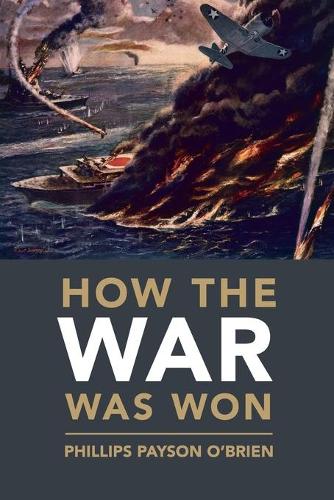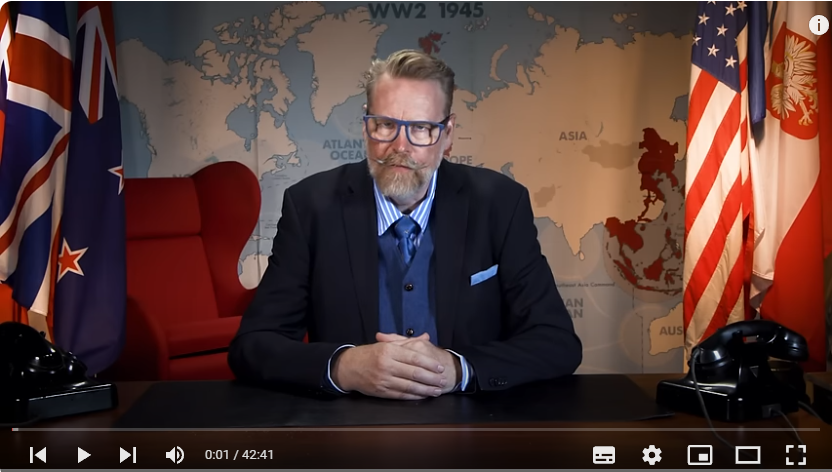In my warfare survey, I have a visual gag where for a week and a half after our WWI lecture, every lecture begins with the same slide showing an aerial photograph (Wiki) of the parallel trenches of the First World War because so much of the apparatus of modern warfare exists as a response, a desperate need to never, ever do the trench stalemate again. And that’s where our story starts.
Fighting aircraft, as a technology in WWI, were only in their very infancy. On the one hand the difference between the flimsy, unarmed artillery scout planes of the war’s early days and the purpose-built bombers and fighters of the war’s end was dramatic. On the other hand the platforms available at the end of the war remained very limited. Once again we can use a late-war bomber like the Farman F.50 – introduced too late to actually do much fighting in WWI – as an example of the best that could be done. It has a range of 260 miles – too short to reach deep into enemy country – and a bomb load of just 704lbs. Worse yet it was slow and couldn’t fly very high, making it quite vulnerable. It is no surprise that bombers like this didn’t break the trench stalemate in WWI or win the war.
However, anyone paying attention could already see that these key characteristics – range, speed, ceiling and the all-important bomb-load – were increasing rapidly. And while the politicians of the 1920s often embraced the assumption that the War to End All Wars had in fact banished the scourge of war from the Earth – or at the very least, from the corner of it they inhabited such that war would now merely be a thing they inflicted on other, poorer, less technologically advanced peoples – the military establishment did not. European peace had always been temporary; the Peace of Westphalia (1648) and the Congress of Vienna (1815) had not ended war in Europe, so why would the Treaty of Versailles (1919)? There had always been another war and they were going to plan for it! And they were going to plan in the sure knowledge that the bombers the next war would be fought with would be much larger, faster, longer ranged and more powerful than the bombers they knew.
One of those interwar theorists was Giulio Douhet (1869-1930), an Italian who had served during the First World War. Douhet wasn’t the only bomber advocate or even the most influential at the time – in part because Italy was singularly unprepared to actually capitalize on the bomber as a machine, given that it was woefully under-industrialized and bomber-warfare was perhaps the most industrial sort of warfare on offer at the time (short of naval warfare) – but his writings exemplify a lot of the thinking at the time, particularly The Command of the Air (1921). But figures like Hugh Trenchard in Britain or Billy Mitchell in the United States were driving similar arguments, with similar technological and institutional implications. But first, we need to get the ideas.
Like many theorists at the time, Douhet was thinking about how to avoid a repeat of the trench stalemate, which as you may recall was particularly bad for Italy. For Douhet, there was a geometry to this problem; land warfare was two dimensional and thus it was possible to simply block armies. But aircraft – specifically bombers – could move in three dimensions; the sky was not merely larger than the land but massively so as a product of the square-cube law. To stop a bomber, the enemy must find the bomber and in such an enormous space finding the bomber would be next to impossible, especially as flight ceilings increased. In Britain, Stanley Baldwin summed up this vision by famously quipping, “no power on earth can protect the man in the street from being bombed. Whatever people may tell him, the bomber will always get through.” And technology seemed to be moving this way as the possibility for long-range aircraft carrying heavy loads and high altitudes became more and more a reality in the 1920s and early 1930s.
Consequently, Douhet assumed there could be no effective defense against fleets of bombers (and thus little point in investing in air defenses or fighters to stop them). Rather than wasting time on the heavily entrenched front lines, stuck in the stalemate, they could fly over the stalemate to attack the enemy directly. In this case, Douhet imagined these bombers would target – with a mix of explosive, incendiary and poison gas munitions) the “peacetime industrial and commercial establishment; important buildings, private and public; transportation arteries and centers; and certain designated areas of civilian population”. This onslaught would in turn be so severe that the populace would force its government to make peace to make the bombing stop. Douhet went so far as to predict (in 1928) that just 300 tons of bombs dropped on civilian centers could end a war in a month; in The War of 19– he offered a scenario where in a renewed war between Germany and France where the latter surrendered under bombing pressure before it could even mobilize. Douhet imagined this, somewhat counterintuitively, as a more humane form of war: while the entire effort would be aimed at butchering as many civilians as possible, he thought doing so would end wars quickly and thus result in less death.
Clever ideas to save lives by killing more people are surprisingly common and unsurprisingly rarely turn out to work.
Bret Devereaux, “Collections: Strategic Airpower 101”, A Collection of Unmitigated Pedantry, 2022-10-21.
January 23, 2025
QotD: The origins of strategic airpower
January 2, 2025
Why Germany Lost the Battle of Britain
Real Time History
Published 2 Aug 2024Summer 1940. The United Kingdom is gripped by the fear of a German invasion. Even if the Luftwaffe secures the sky over Britain, could Germany’s Operation Sea Lion ever really work?
(more…)
November 15, 2024
QotD: Battles are over-rated
Take another look at the conventional narrative. Almost every key event involves a battle, a period of time in a relatively localized area where combatants slugged it out to see who would occupy some bit of land or sea. To [How the War Was Won author Phillips Payson] O’Brien, this focus is silly, a relic of long-ago wars in ages with far less industrial capacity.
Start with theory. States fight to impose their will on another state in pursuit of some political goal. To do that requires that they achieve sufficient local military superiority that the other state can’t stop them from achieving their political goal.
Nazi Germany wanted to be the new administrators of the agricultural area of the western Soviet Union. To do that, they had to evict the Soviet military, whether through direct destruction or forcing the Soviet government to withdraw their armed forces. Individual battles for control of a localized area only matter if they are a means to that end.
Does the occupation or non-occupation of that point on the map affect the ability of a combatant to keep fighting?
In some limited cases, yes. Battlefield victory enabled Germany to overrun France before France could really focus its productive effort on the war. After their surrender, the French could not produce weapons, and they functionally could not organize their manpower to fight the Germans. But if the German army conquered, say, a random city in the Soviet Union, like Stalingrad, Soviet production and manpower was barely affected. The war goes on.
In theory, the German army could destroy so much of the Soviet military in one battle (or even a few discrete battles) that the Soviets run out of men or weapons. If there was ever a time this could have happened, it would have been the German invasion of the Soviet Union in 1941, when the Germans basically won a series of crushing victories.
The problem for the Germans was that by World War II, people in the combatant countries were good at building stuff in vast quantities, and the major combatants of World War II generally had access to sufficient natural resources. Even massive armies could not destroy produced weapons systems (e.g., tanks, airplanes) on the battlefield fast enough to remove the other side’s ability to continue fighting. What could (and did) happen was the destruction of the other side’s ability to produce and distribute weapons.
Sure enough, if you look at the actual data from even the largest battles, neither side really destroys a hugely significant amount of stuff. Take the Battle of Kursk — the largest tank and air battle of World War II. Wikipedia will dazzle you with the numbers of soldiers involved (millions), tanks deployed (in the ballpark of 10,000), and aircraft in the sky (in the ballpark of 5,000).
In this entire vast battle that supposedly dictated the outcome of the Eastern Front, the Germans lost approximately 350 armored fighting vehicles (AFVs) during the most intense 10 days of fighting. In the two months around when the battle took place, the Germans lost 1,331 AFVs on the entire Eastern Front. In the year of the battle, 1943, the Germans built more than 12,000 AFVs. Also worth noting: they disproportionately lost older, obsolete tanks at Kursk, and built new, capable tanks. The Germans lost a very manageable amount of equipment at Kursk — less than a month’s worth of AFV production.
If modern war means you cannot realistically destroy enough weapons in one battle to matter — if the largest battle of all time didn’t really matter — what did?
Anonymous, “Your Book Review: How the War Was Won“, Astral Codex Ten, 2024-08-09.
November 13, 2024
The Korean War Week 21 – US Elections Threaten MacArthur! – November 12, 1950
The Korean War by Indy Neidell
Published 12 Nov 2024MacArthur’s forces struggle to make sense of the recent Communist Chinese intervention in Korea, especially when the Chinese vanish as quickly as they arrived. Back in the US, the war’s popularity has reached an all-time low on the eve of the crucial 1950 midterm elections. Is MacArthur about to pay the price for his failure to deliver results on the ground?
Chapters
00:00 Intro
01:01 Recap
01:24 The Chinese Vanish
02:37 The East
04:35 The US Situation
11:28 Bombing the Yalu
13:03 Summary
13:23 Conclusion
14:26 CTA
(more…)
November 2, 2024
The Short SA.4 Sperrin; Britain’s Back-Up, Back-up Nuclear Bomber
Ed Nash’s Military Matters
Published Jul 9, 2024No, I have no idea how you pronounce “Gyron”.
August 15, 2024
August 11, 2024
The US drops two atomic bombs on Japan – WW2 – Week 311 – August 10, 1945
World War Two
Published 10 Aug 2024This week atomic bombs are for the first time in history dropped on cities — Hiroshima and Nagasaki in Japan. The bombs kill over 100,000 people and flatten large parts of the urban area. The Japanese government is actually meeting while the second bomb is dropped to consider their response to the first and to the demands for unconditional surrender. The response is not just to that first bomb, though, for on the 8th the Soviets tell the Japanese not only that they will not help them negotiate some sort of settled peace with the other Allies, they too are declaring war on Japan, and indeed invade Manchuria. With two atomic bombs and an invasion instead of mediating help, Japanese Emperor Hirohito cuts off any debate and says that Japan will surrender. This could happen next week.
00:00 Intro
00:17 Recap
00:44 Hiroshima Bombing
02:35 The Bombing Mission
04:19 Descriptions Of The Blast
06:38 The Nagasaki Bomb
07:37 The Tactics
08:31 The Japanese Response
12:55 Soviets Invade Manchuria
16:18 Splitting Korea
18:07 Operation Zipper
19:31 End Notes
20:08 Summary
20:30 Conclusion
(more…)
August 7, 2024
Unleashing the Atom: The Bombing of Hiroshima and Nagasaki – War Against Humanity 139
This video is only available on YouTube itself – click the image above or click here.
World War Two
Published 6 Aug 2024In August 1945, the United States became the first, and to this day only, nation ever to employ nuclear weapons in war. After The fledgling technology proves itself on the testing ground, it is ready for immediate use. The price for this innovation is paid by hundreds of thousands of Japanese civilians who are blinded, burned, crushed, irradiated, and finally burned in a humanitarian crisis never seen before and never since. Join us to hear the gut-wrenching accounts of survivors and understand the motivations behind this tragic outcome to ensure that the horrors of nuclear war are never forgotten and never again unleashed upon the world and its people.
August 4, 2024
Mokusatsu! – WW2 – Week 310 – August 3, 1945
World War Two
Published 3 Aug 2024The Japanese reaction to the Allied ultimatum for unconditional surrender is … mokusatsu. This can be translated several ways, but all involve not giving a response. Meanwhile, materials for atomic bombs to be dropped on Japan are delivered to Tinian, though the ship making the delivery is sunk by a Japanese submarine days afterward. The active war continues in Burma and China, and the Potsdam Conference ends in Germany with the map of Poland very much re-drawn.
00:00 Intro
00:56 Mokusatsu
05:47 Delivering Atomic Material
07:22 Sinking The Indianapolis
09:26 Bombing Japan
12:22 The War In Burma And China
14:07 Potsdam Confernece Ends
17:02 Conclusion
(more…)
July 28, 2024
Allies Issue Potsdam Declaration – WW2 – Week 309 – July 27, 1945
World War Two
Published 27 Jul 2024China, Britain, and the US issue a Declaration demanding Japan’s unconditional surrender, and promising complete destruction if this does not happen and happen soon. The plan is to for the Americans to use their atomic bombs on Japan if she does not comply, but by the end of the week the Japanese have not replied. They still have hopes for the Soviets to mediate some sort sort of peace. What they don’t have is a navy, as its final destruction comes this week.
00:00 Intro
00:50 Recap
01:32 The Potsdam Conference
04:41 Japanese Hopes
05:56 The Potsdam Declaration
10:53 The Initial Reaction
14:48 The End Of The Japanese Navy
15:05 The War On Land
19:10 Summary
19:30 Conclusion
(more…)
July 16, 2024
This Jet Age – Farnborough Airshow, 1953
spottydog4477
Published Dec 25, 2009
June 28, 2024
Japan Decides on Peace – Are They Too Late? – War Against Humanity 137
World War Two
Published 27 Jun 2024The US bombers continue destroying Japanese cities with a rain of firebombs. As the country burns, the Japanese leadership and Emperor Hirohito finally realise they must seek peace.
(more…)
June 2, 2024
Japan vows to fight to the end! – WW2 – Week 301 – June 01, 1945
World War Two
Published 1 Jun 2024This week President Truman and his aides meet to discuss the use of the atomic bomb. In Japan, the Imperial government vows to fight on even as Yokohama is turned to ash by firebombing. On Okinawa, Japanese 32nd Army withdraws from the defences of Shuri Castle but there is still plenty of hard fighting left for the Americans. There are US Navy command reshuffles and the stage is set for an Allied conference in Potsdam.
Chapters
01:21 Recap
05:08 The Fight on Okinawa
08:38 The Interim Committee And The Bomb
14:02 Notes
(more…)
February 28, 2024
V-2: Hitler’s Wunderwaffe
World War Two
Published 27 Feb 2024Hitler hopes that the V-2 rocket will turn the tide of the war. It’s cutting edge technology and impossible to intercept. Right now, the first long-range ballistic missile is raining death on London and Antwerp. But is it too little, too late? Find out the backstory to this powerful weapon.
(more…)
February 4, 2024
Is the Red Army too fast for its own good? – WW2 – Week 284 – February 3, 1945
World War Two
Published 3 Feb 2024Soviet forces have reached the old German border in force, however, logistical issues and a strong enemy presence possibly threatening their flanks means that a drive on Berlin may not be doable just now. Heinrich Himmler is in charge of the new Army Group to defend the Reich, and he has a host of problems. On the Western Front, the Allies finally eliminated the Colmar Pocket, and in the Philippines, the American advance reaches Manila, and the battle for the city is about to begin.
(more…)





